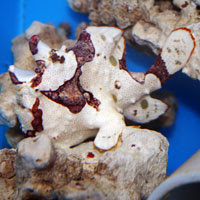
Just got back from MACNA XIX in Pittsburgh, and I would like to congratulate the Pittsburgh Marine Aquarium Society for hosting and outstanding conference.
The next few Blog topics will be about some of the Seminars and Events that I attended at this years MACNA conference.
One of the seminars that I found really interesting was the Giant Clam presentation by James Fatherree. James is the author of the book “Giant Clams in The Sea And The Aquarium”and gave a presentation based upon some of the most common questions that he is asked about Giant Clams, and the Answers to those questions.
How much light do I need to keep a Tridacna Clam? This is a question that I am commonly asked about clams from our customers here at TFP, and one of the questions that James Fatherree addressed during his presentation. How much light is needed is probably the most important question to be answered, in regard to keeping giant clams in the aquarium. Giant clams receive as much as 100 percent of their nutrition from light that provides energy for photosynthesis for their symbiotic algae (zooxanthellae). How much light depends much upon the species of clam that you are trying to keep. Clams are found in the oceans throughout a wide range of depths in the tropical Pacific Ocean, from near the oceans surface, down to more than 25 meters (83 feet). Some species are only found in fairly shallow water, like the Tridacna crocea, which require very intense lighting. Others Giant Clam species such as T. maximaand T. squamosa, are found at depths of up to 15 meters (50 feet) and required strong lighting. Another species of Giant Clam that is commonly kept in the aquarium trade, T. derasa, is found at depths of up to 25 meters (83 feet) and require moderate lighting. All these depths are extreme maximums, under ideal conditions. The vast majority of clams found in the wild are found at much shallower depths than these maximum. All species of Clams that are grown in commercial farms are typically grown in shallow pools or raceways under intense lighting.
The best answer to this question is that there is no such thing as too much light for Clams in the aquarium. Deeper water species, like Tridacna derasa and Hippopus hippopus, will tolerate fluorescent lighting in very shallow aquariums, or high output T-5, VHO, or Compact Fluorescent lighting in aquariums up to about 24” deep. All other clams should only be kept under the intensity of Metal Halide lighting. The deeper the aquarium the higher wattage metal halide light should be used, in general the more light you can provide, the higher your chances for long term health and growth.
For more great information on Giant Clams check out James Fatherree’s book “Giant Clams in The Sea And The Aquarium”
Hope this sheds some light on questions that you may have had about clams, until next time.
Dave
 One of the most interesting fish available in the aquarium hobby, is also one of the most difficult to see. Anglerfishes, also known as frogfish, are masters of disguise and camouflage, and have developed an amazing array of shapes, colors and textures to allow them to blend into their surroundings. Some look like rocks, some look like sponges, some look like algae, and some look like aliens from a distant planet.
One of the most interesting fish available in the aquarium hobby, is also one of the most difficult to see. Anglerfishes, also known as frogfish, are masters of disguise and camouflage, and have developed an amazing array of shapes, colors and textures to allow them to blend into their surroundings. Some look like rocks, some look like sponges, some look like algae, and some look like aliens from a distant planet. Anglers spend most of their time sitting on the bottom, or “walking” around on their modified pectoral fins, that look more like legs in some species. You will rarely see an Angler swimming around in the open, as they are poor swimmers.
Anglers spend most of their time sitting on the bottom, or “walking” around on their modified pectoral fins, that look more like legs in some species. You will rarely see an Angler swimming around in the open, as they are poor swimmers. That Fish Blog – Aquarium Advice and Information
That Fish Blog – Aquarium Advice and Information


